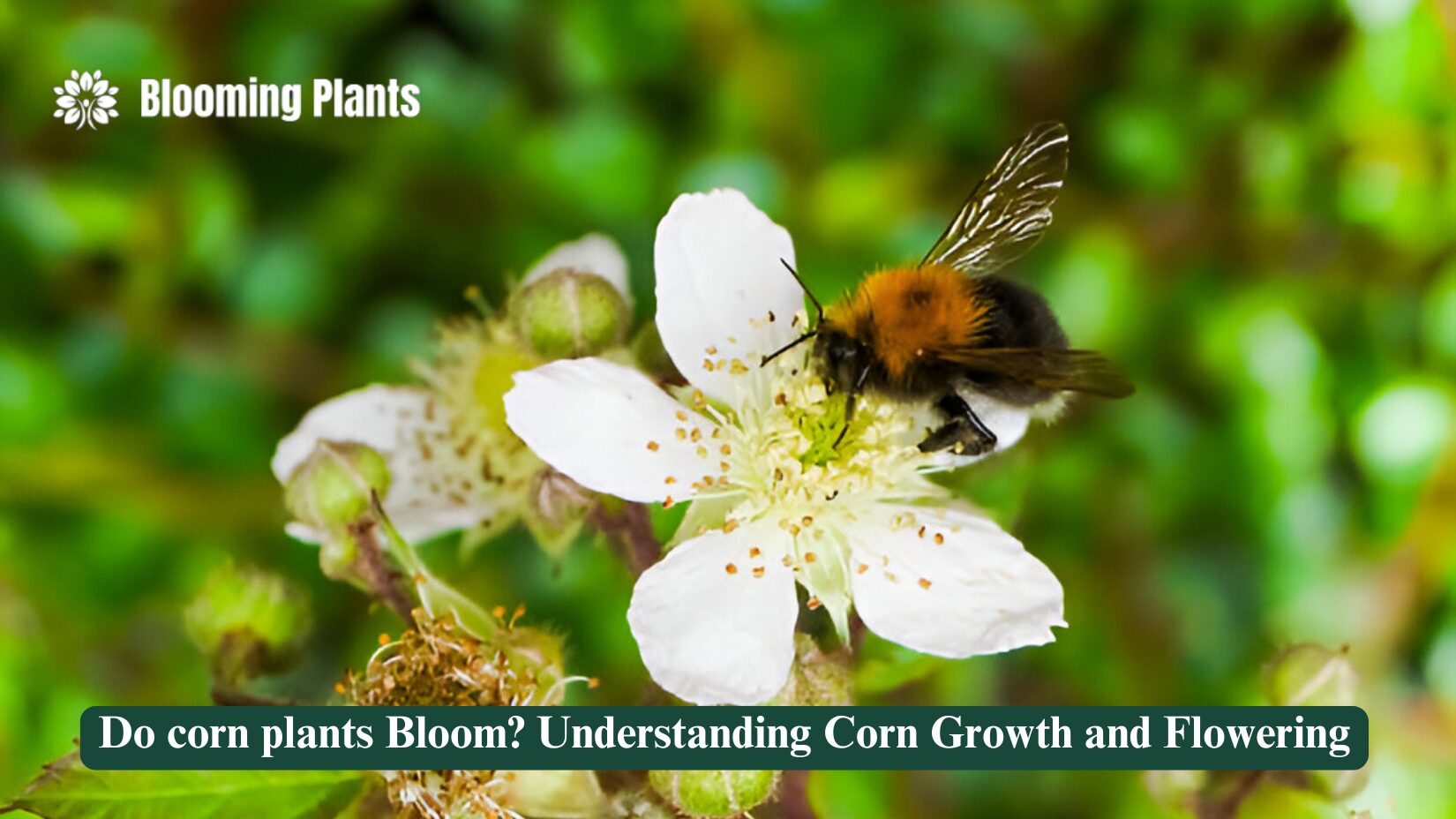Introduction
Corn plants are a staple in global agriculture, serving as a source of food, fodder, and industrial materials. Their flowering stage is a pivotal point in their life cycle, directly influencing their yield. But what does blooming mean for corn? Unlike typical flowers, corn’s blooms are unique and specialized. In this article, we’ll explore the anatomy of corn plants, their reproductive mechanisms, and the environmental factors that influence blooming. Whether you’re a farmer, gardener, or student, this guide will deepen your understanding of corn plants.
Anatomy of Corn Plants
Structure of a Corn Plant
- Roots: Support and nutrient absorption.
- Stalks: The backbone of the plant, providing strength.
- Leaves: The site of photosynthesis, powering growth.
Male and Female Parts of Corn
- Tassels: The male flowers, producing pollen.
- Ears: The female flowers, developing into kernels.
- Silks: Capture pollen to initiate fertilization.
How Corn Differs From Other Blooming Plants
- Unique Flowering Mechanism: Monoecious plant with separate male and female flowers.
- Absence of Petals: Unlike typical flowers, corn has no showy petals.
- Reproductive Efficiency: Designed for wind pollination.
Growth Stages of Corn
Germination and Early Growth
- Seed Germination: First roots and shoots emerge.
- Vegetative Stages: Development of leaves and stalk.
- Importance of Proper Spacing: Optimal spacing promotes healthy growth.
Tasseling Stage
- Formation of Tassels: Male flowers emerge at the top.
- Pollen Production: Critical for fertilization.
- Timing: Occurs around 55-65 days after planting.
Silking and Pollination
- Silk Development: Female flowers emerge.
- Pollination Window: Typically lasts 5-7 days.
- Environmental factors: Temperature and humidity affect success.
Do Corn Plants Bloom?
Understanding Corn Blooming
- Definition of Blooming: In corn, blooming refers to tasseling and silking.
- Role of Tassels and Silks: How male and female structures interact.
- Comparison With Other Plants: Differences from Traditional Blooming.
Pollination Process
- Wind-Pollination: Pollen travels from tassels to silks.
- Silk Receptivity: Captures pollen grains effectively.
- Kernel Formation: fertilized ovules develop into kernels.
Signs of Blooming
- Tassel Emergence: Visible at the top of the plant.
- Silks appearance: Long, thread-like structures.
- Colour Changes: Silks turn brown after pollination.
Environmental Factors Affecting Blooming
Temperature
- Optimal Range: 60-86°F (15-30°C).
- Impact of Heat Stress: Reduced pollination success.
- Cold Stress: Delayed flowering.
Soil and Nutrients
- Nitrogen Levels: Essential for healthy growth.
- Soil moisture: Affects silk and tassel development.
- Fertilizer Use: Balanced application ensures optimal blooming.
Light and Photoperiod
- Day Length Sensitivity: Most corn varieties are day neutral.
- Light intensity: Affects photosynthesis and energy availability.
- Shading Effects: Reduces flowering efficiency.
Agricultural Practices for Successful Blooming
Proper Planting Techniques
- Planting Depth: 1.5-2 inches for most soils.
- Row Spacing: 20-30 inches for optimal air circulation.
- Seeding Rate: Avoid overcrowding for better tasseling.
Irrigation Strategies
- Consistent Watering: Especially during silking.
- Avoid Water Stress: Leads to poor pollination.
- Drip vs. Overhead: Choosing the Best Method.
Fertilization Best Practices
- Timing: Apply nitrogen at key growth stages.
- Balanced Nutrients: Include phosphorus and potassium.
- Organic Options: Compost and manure for sustainable farming.
Common Problems in Corn Blooming
Tassel Blast
- Symptoms: Tassels fail to develop fully.
- Causes: Heat stress or nutrient deficiencies.
- Solutions: Adjust irrigation and fertilization.
Silk Clipping
- Symptoms: Damaged silks from pests.
- Causes: Corn rootworm beetles and other insects.
- Prevention: Use insecticides or integrated pest management.
Poor Kernel Set
- Symptoms: Incomplete or misshapen ears.
- Causes: inadequate pollination or drought stress.
- Solutions: Improve pollination conditions and water supply.
Harvesting and Post-Blooming Care
Identifying Maturity
- Milk Stage: Kernels are soft and milky.
- Dough Stage: Kernels firm up and solidify.
- Physiological Maturity: A black layer forms at the kernel base.
Optimal Harvesting Time
- Sweet Corn: Harvest in the milk stage.
- Field Corn: Wait for physiological maturity.
- Signs: Dry husks and fully developed ears.
Post-Harvest Storage
- Drying: Reduce moisture content to 14% for storage.
- Pest Control: Protect against grain pests.
- Long-Term Storage: Use sealed silos or containers.
Table: Corn Growth Stages and Key Milestones
| Stage | Days After Planting | Key Features |
| Germination | 0-10 | Roots and shoots emerge |
| Vegetative Growth | 11-50 | Leaves and stalks develop |
| Tasseling | 55-65 | Male flowers form |
| Silking | 60-70 | Female flowers emerge |
| Pollination | 60-75 | Fertilization occurs |
| Kernel Development | 75-100 | Kernels grow and mature |
Conclusion
Corn plants do indeed bloom, but their blooming process is unique, involving tassels and silks instead of conventional flowers. Understanding the factors influencing corn’s flowering and adopting proper agricultural practices can significantly enhance pollination success and yield. Whether you’re growing corn in your backyard or managing a large-scale farm, knowledge of corn’s blooming stages is invaluable for achieving a bountiful harvest. Happy growing!
FAQs
- Do all corn plants bloom?
Yes, all healthy corn plants go through a flowering stage, which includes tasseling and silking. - What does corn blooming look like?
Blooming involves the emergence of tassels at the top and silks from the ears. - How long does the cornflowering stage last?
Tasseling and silking typically last 1-2 weeks. - What factors can delay corn blooming?
Low temperatures, nutritional deficiencies, and water stress are common causes. - Can corn pollinate itself?
Yes, corn is wind-pollinated, but cross-pollination often occurs. - What happens if pollination fails?
Poor pollination results in incomplete or misshapen ears. - How can farmers improve pollination success?
Ensure proper spacing, irrigation, and fertilization. - Why are my corn plants not producing tassels?
Stress factors like heat, drought, or pests may inhibit tassel development. - What is the best time to plant corn for optimal blooming?
Early spring or when soil temperatures reach 50-55°F. - How do I know if my corn is ready to harvest?
Check for brown silks, dry husks, and well-filled kernels.

